Amazing content marketing statistics to show that it works

After China, India is considered as the second largest online market with 462 million users. This user-base constitutes 13.5% of the total internet users in the world. About 75% of these online users are between 15—34 years of age, given India’s young demography. The 462 million internet users in India are projected to reach 850 million by 2025 [i]– an 85% rise. As a result, there are implications every content marketing expert should consider.
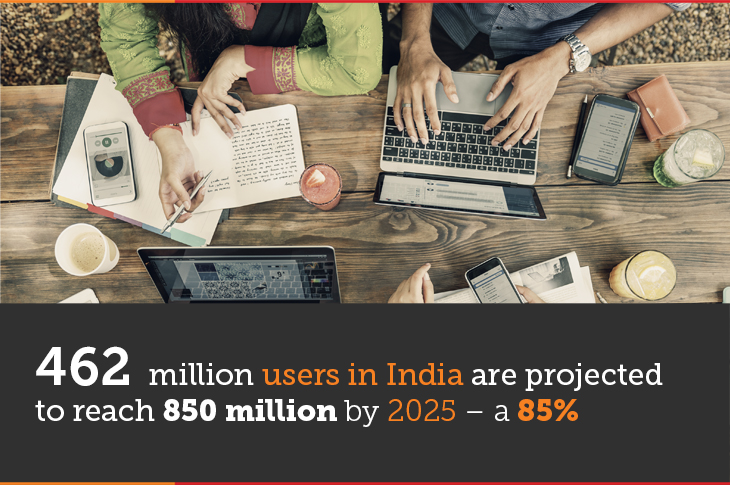
Given the prevalence of technology in the way Indians are connecting, brands can garner the internet users’ audience with content. Getting the right information to the young audience at an opportune right time can form a synapse – the first step for a brand to foster a relationship with their target consumers. As the relationship grows so does the brand in the marketplace, based on the depth and visibility the content renders across the buying process right from the early-stage awareness to final purchase decision.
- Five years ago (2013), there were more than 60 marketing channels, and two years hence (2020) there will be more than 100. To reach out to their customers across this multitude of channels, 78% of the CMOs believe that Custom Content (original content that belongs to the company) is the future of marketing [xi].
- Branded content is considered 72% more efficient than magazine advertisements. The cost to reach 2,000 people, traditionally by newspaper and magazine is $250 and $500, respectively [ii]. 69% of marketers believe it to be better than even the best of direct mail campaigns [xi].
- 58% of marketers said ‘original written content’ is the most important type of content [Social Media Examiner]iv. The custom content should be characterised by transparency since millennials are averse to interacting with businesses with self-serving agendas. PR exercise on going green or giving back to the society is called out for being a gimmick. Therefore, brands need to strive to be perceived as realistic agents of change, rather than powerful wizards that will vanish problems.
Content marketing is one of the top 3 BIG BETS for marketers in 2018. Content marketing took centre-stage in 2017 as Indian marketers explored tech-enabled marketing tools and experienced the power of visualisation and story-telling. Consequently, this year customer trust and loyalty will be basis high-quality ‘branded content’ and thought leadership rather than the standard, which is mass communication.
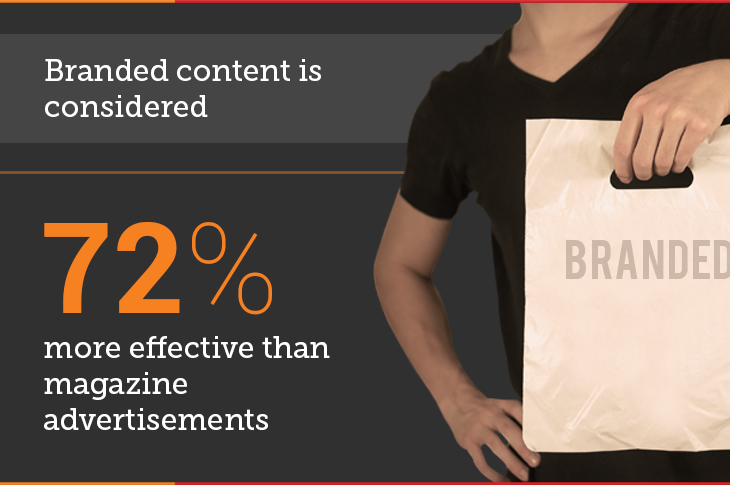
- No surprises, therefore, the agenda on the 2018 marketing plans of several Indian marketers include team expansion (97%) and budget increases (74%). Marketing automation, content and email marketing, video content and influencer marketing emerged as top areas of investment for Indian marketers. And the key focus areas regarding business outcome – customer acquisition (92%) and retention (83%).
- Marketers are allocating 42% of their total marketing budgets to content, and they are spending over 25% of their budget on content marketing.
- Apple is, supposedly, planning to invest over $1 billion on original content. This is believed to be beyond foraying into the television show or streaming video business. Instead, Apple is likely to thus grow its audiences and retain attention with valuable programs and thus stay relevant and consistent.
- Google is buying original content from both brands and media companies, specifically to fill content gaps found through their search algorithms.
- Facebook is spending on original video directly out of the marketing budget.
- And then there is Amazon with its large-ticket original content purchases
Source: Content Marketing Trends to Watch for 2018, CMI, SEPTEMBER 2017
Case In Point!
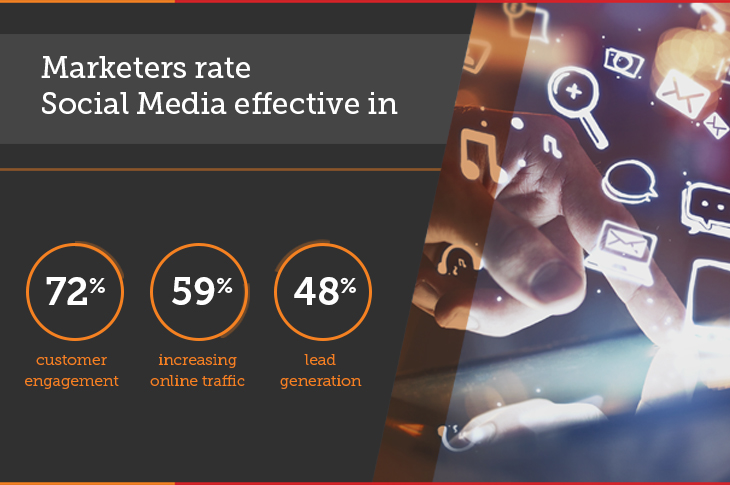
- Social Media updates emerged as the most (customer) engaging digital channel for Marketers (B2B:46% | B2C:55%), with Email Campaigns (36% | 25%) as the other channel. Marketers rate Social Media effective in customer engagement (72%), increasing online traffic (59%), and lead generation (48%). In fact, increased marketing investment in 2018 is allocated mostly to Social Media Marketing at (64%), Website Development/Update (55%), Search Marketing (49%), and Videos (41%)[iv]. Given that 93% [i] of internet users are either on Facebook or Twitter or Instagram, leveraging Social Media seems efficient.
- Content Marketing is considered helpful in increasing brand awareness (70%), engaging the newer audience (65%), customer attraction and retention (58%), innovation through thought leadership (54%), and finally lead generation (43%)[ii].
- 70% (2017:65%) of the marketers deploy content marketing over Social Media. Blogs and newsletter (66%), testimonials and case studies (55%), imagery (46%), videos and webinars (46%), and research and white paper (32%) are the other[ii].
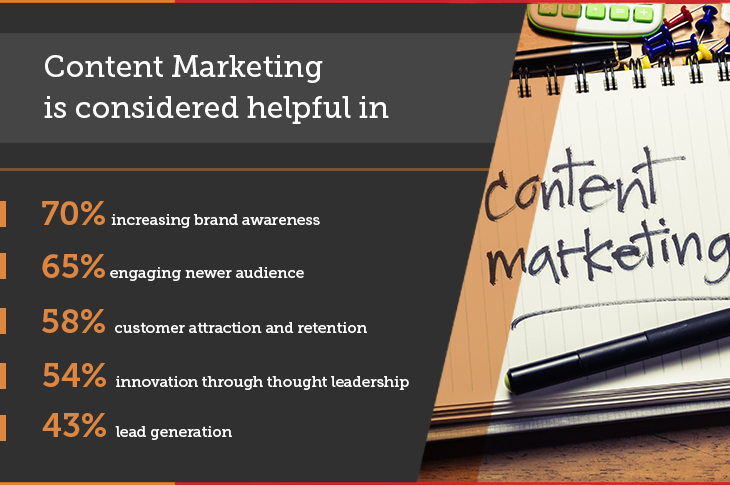
Brands focusing on their core content and consistently delivering material resonating with the readers experience 7.8 times more site traffic than brands considered “non-leaders” in the context of content marketing [xi].
- 1 in 10 blog posts that increase in traffic over time due to organic search. 38% of overall traffic generated from such blog posts. 55% of business bloggers are gaining at least 5% of their corporate website’s traffic from their blog [xi].
- Notably, companies that blog 15 or more times each month receive five times more traffic than companies that don’t blog [v] . Site visitors prefer content that is relevant in its information, education, and entertainment and valuable in being nowhere else.
- Thus, 60% of marketers agree that content has to be relevant to stay competitive which means regularly updating the brand’s site, i.e. crafting at least one unique piece every single day.
And why not?
- There are more than 900 private TV channels and 250 radio stations in India, which make traditional marketing, conspicuous with in-built ambivalences, quite expensive. The cost to reach 2000 audience could be as low as $150 (broadcast) and as high as $900 (direct mail). However, digital marketing costs range between (search) $50—75 (social networking).
- Content marketing costs 62% less while it generates about three times as many leads when compared to the traditional media – television, radio or print [vi] [vii] . As marketing automation makes steadfast inroads, content marketing is going all out with engaging storytelling to create positive experience across emerging newer channels and devices of interaction. Content marketing could, thus, navigate audiences through a memorable brand journey.
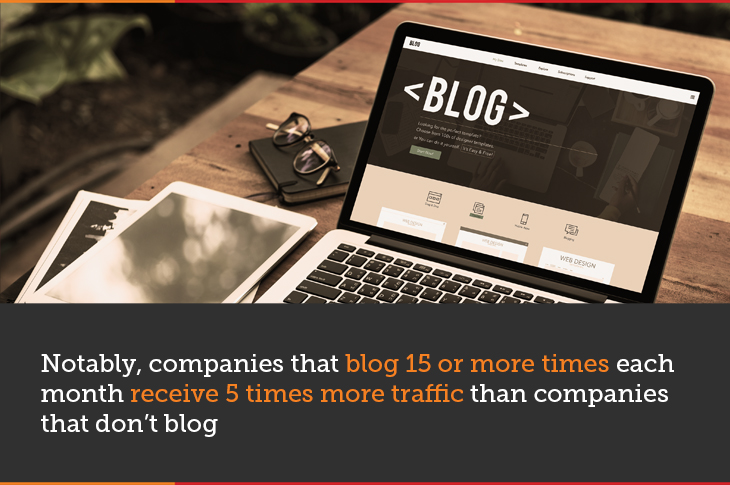
Leaders break silos and involve more stakeholder groups in the content planning process. They are likely to bring together the internal PR and communications teams, research teams, and sector/department heads to align content with the company’s overall direction. Given they know best what the clients are looking for, the sales, SEO and social teams are involved in topic generation. Leaders recognise that the skills to successfully identify and plug gaps in the information market, capture audiences, and nurture customer loyalty is different from those for product design and development. So, they step outside the gates of their offices to collaborate with content marketing specialist agencies to help drive strategy, planning and creation.
- Against this backdrop, content creation is mostly an outsourced function. 60% of the content last year was the brainchild of either a specialised content agency (24%) or a creative agency (20%) or a digital agency (16%) [viii]. Leaders have a more developed relationship here than others.
Leaders are aware that clients look to their partners to make better decisions. Towards this, they are more likely to equip clients with content that informs of emerging trends and elevate them over their competitors.
Others, on the back of sales-minded and transactional view of content, are more likely to believe clients want to use branded content just to compare providers. Over 36% of marketers in professional services firms either ‘tend to write what the practice wants to write about’ or just ‘don’t know’ if they are creating content their clients would want to engage with[ix].
60% of marketers reuse content two to five times. They generate “snackable” content based on assets [ii]. Top marketers understand the value of repurposing their most valuable content into bite-sized portions, such as videos, podcasts, or e-books, creating several different streams of revenue.
- In 2017, the mobile phone as a device to access the Internet in India had an 80% share [x]. A year ago, it was 65%, and in 2015 it was 52%. Inexpensive smartphones and data packages coupled with the availability of more mobile-friendly content are driving growth [vii]. In line with the global trend, this implies increasing relevance of bite-size visual content in content marketing strategies [xi].
- 49% of marketers are striving to learn how to align their content marketing efforts with the buyer’s journey.
- About 70% of those with access to the internet go online to make informed purchase decisions. In mobile phones, almost 50% of buyers who have access to the internet use both online and offline touch points in their purchase journeys [vii]. The internet is increasingly turning into the first action in the consumers’ purchase decision-making. As they get more comfortable with digital capabilities, the consumers’ usage patterns grow notwithstanding age and other demographic variables [vii].
Why videos?
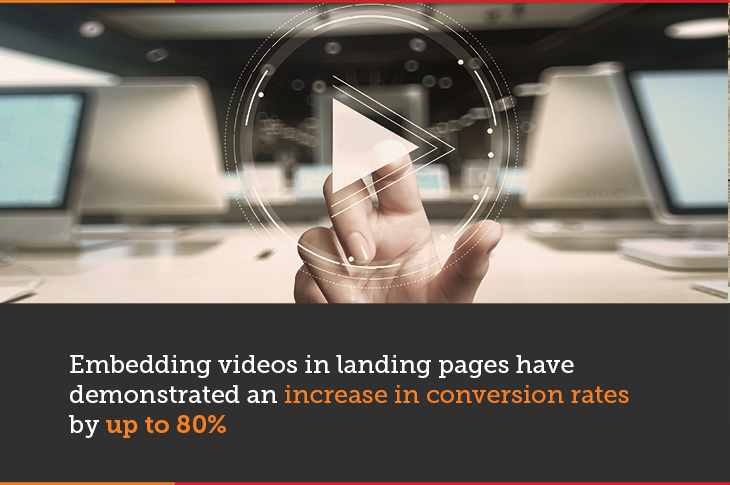
- Product videos help 90% of customers make purchasing decisions. 59% of company decision makers prefer to watch a video than read an article or blog post [xi].
- The year 2018 is expected to witness most of the projected ~114.5% growth (2015—20) in the number of digitally-influenced shoppers. So, this year will be instrumental in contributing to the final number of 300 million digitally-influenced shoppers [iv] in 2020. Loyalty-oriented content marketing strategies can pull an audience from this burgeoning segment.
- Digitally influenced spending is currently about $45—50 billion a year, and that figure is projected to increase more than tenfold to $500—550 billion, accounting for 30—35% of all retail sales, by 2025.
- Every second, a million minutes or almost 17,000 hours of video content will cross the network by 2021. Video accounts for 69% of all consumer internet traffic these days. Video-based content marketing will continue to be a blazing trend in pulling traffic and growing audience. By 2019, video will become dominant in digital advertising, claiming more than 80% of all web traffic.
- Up to 87% of online marketers are currently using video content in their digital marketing strategies. Creating videos for marketing has shown to boost click-through rates by 200—300%. Embedding videos in landing pages have demonstrated an increase in conversion rates by up to 80%.
- Video ads accounted for more than 35% of advertising spending online
- In times of Facebook and YouTube, acceptance is no longer a question. 73% of B2B marketers utilise YouTube for their content distribution, along with LinkedIn and other social media channels.
- If anything, it’s a no-brainer to showcase testimonials, demos, solutions or to promote events, products, services in a video format. 4 out of 5 customers say that a video showing how a product/service works is important. A video can turn the value proposition of a conventionally boring product enjoyable. 64% of customers are more likely to buy a product online after watching a video about it. It can be inexpensive, varying across sub-formats such as demos, explanations/tutorials, interviews and live streaming. The message that is conveyed in a one minute video is as effective as 1.8 million word-count content. Ease of creation, advancements in production, and effective distribution over reliable platforms have ensured impact.
- Thus, video emerges as an online marketing activity with a significant (and only) increase of marketing investment in 2018 at 41% (2016: 34%).
- Digitally influenced spending is currently about $45—50 billion a year, and that figure is projected to increase more than tenfold to $500—550 billion, accounting for 30—35% of all retail sales, by 2025.[xi]
- Every second, a million minutes, or almost 17,000 hours of video content will cross the network by 2021. Video accounts for 69% of all consumer internet traffic these days [Cisco] [ii] [xii]. Video-based content marketing will continue to be a blazing trend in pulling traffic and growing audience. By 2019, video will become dominant in digital advertising, claiming more than 80% of all web traffic [xi].
- Upto 87% of online marketers are currently using video content in their digital marketing strategies. Creating videos for marketing has shown to boost click-through rates by 200—300%. Embedding videos in landing pages has demonstrated an increase in conversion rates by up to 80% [xi].
- Video adsaccount for more than 35% of advertising spending online [xi].
- In times of Facebook and YouTube, acceptance is no longer a question. 73% of B2B marketers utilize YouTube for their content distribution, along with LinkedIn and other social media channels [xi].
- If anything, it is a no-brainer to showcase testimonials, demos, solutions or to promote events, products, services in a video format. 4 out of 5 customers say that a video showing how a product/service works is important. A video can turn the value proposition of a conventionally boring product enjoyable.
- 64% of customers are more likely to buy a product online after watching a video about it [xi]. It can be inexpensive, varying across sub-formats such as demos, explanations/tutorials, interviews and live streaming. The message that is conveyed in a one minute video is as effective as 1.8 million word-count content [xi]. Ease of creation, advancements in production, and effective distribution over reliable platforms have ensured impact.
- Thus, video emerges as an online marketing activity with a significant (and only) increase of marketing investment in 2018 at 41% (2016: 34%). [ii]
200 million people that are using ad blockers which means they will never see the ads a brand signed-up for under paid advertisements [xiii]. In India 28% of mobile and desktop users had adblockers installed (December 2016) [xiv]. This means 100—130 million of the internet users in the country.Now, in the time and age of digital advertising, ad-blockers may seem an aberration; not in the long-run though.Here’s the twist!Rather than killing every ad, Google’s tool filters out “unacceptable” ads as defined by the Coalition for Better Ads. For the uninitiated This implies publishers and advertisers to improvise, eventually reducing the need for an ad blocker.Yet there are challenges…71% organisations with 200 or more employees and 42% marketers with fewer than 25 employees admit ROI measure of the produced content poses the biggest content marketing challenge [ii].And if that is holding you back on going full steam in integrating content marketing into your marketing strategy, then check out our infographic – How to measure content marketing ROI.However, if this isn’t the reason and inertia is your reason, then you may want to consider you are losing out to competition because 72% [xi] of people are crafting more content than a year ago. They are focusing on high-quality content that provides value and generates conversions. And there is every plausible likelihood your competition is either seeking content from or is in this demography.
Sources:
[i] https://www.semrush.com/blog/state-of-digital-marketing-in-india/
[ii] http://www.digitalvidya.com/blog/future-of-digital-marketing-in-india/
[iii] https://economictimes.indiatimes.com/industry/services/advertising/marketers-bet-big-on-automation-content-marketing-video-in-2018-survey/articleshow/62757233.cms
[iv] http://octaneresearch.in/the-digital-dividend.pdf
[v] http://www.forbesindia.com/blog/content-marketing/seven-strategies-a-content-marketing-beginner-needs-to-learn/
[vi] http://www.campaignindia.in/article/opinion-five-milestones-content-marketers-should-cross-in-2018/441923
[vii] http://www.urbandmc.com/blog/2017/03/10/important-statistics-you-need-to-know-about-digital-content-marketing-in-india/
[viii]https://authenticstorytelling.net/survey-whats-state-content-marketing-india/
[ix] https://marketinginsidergroup.com/content-marketing/content-planning-lessons-b2b-marketing-leaders/
[x] https://inc42.com/resources/content-marketing-startups-2018/
[xi] https://www.bcg.com/publications/2017/marketing-sales-globalization-new-indian-changing-consumer.aspx
[xii] https://www.watconsult.com/2017/11/wattalks-videos-drive-future-digital-content-marketing/
[xiii]https://www.ziosolutions.com/inbound-marketing-blog/35-statistics-that-prove-the-value-of-content-marketing
[xiv] https://www.businessinsider.in/Heres-how-many-people-use-ad-blockers-around-the-world/articleshow/58288934.cms ; https://www.businessinsider.in/Adblock-Plus-Googles-new-Chrome-ad-blocker-will-only-block-17-of-online-ads/articleshow/62637478.cms
